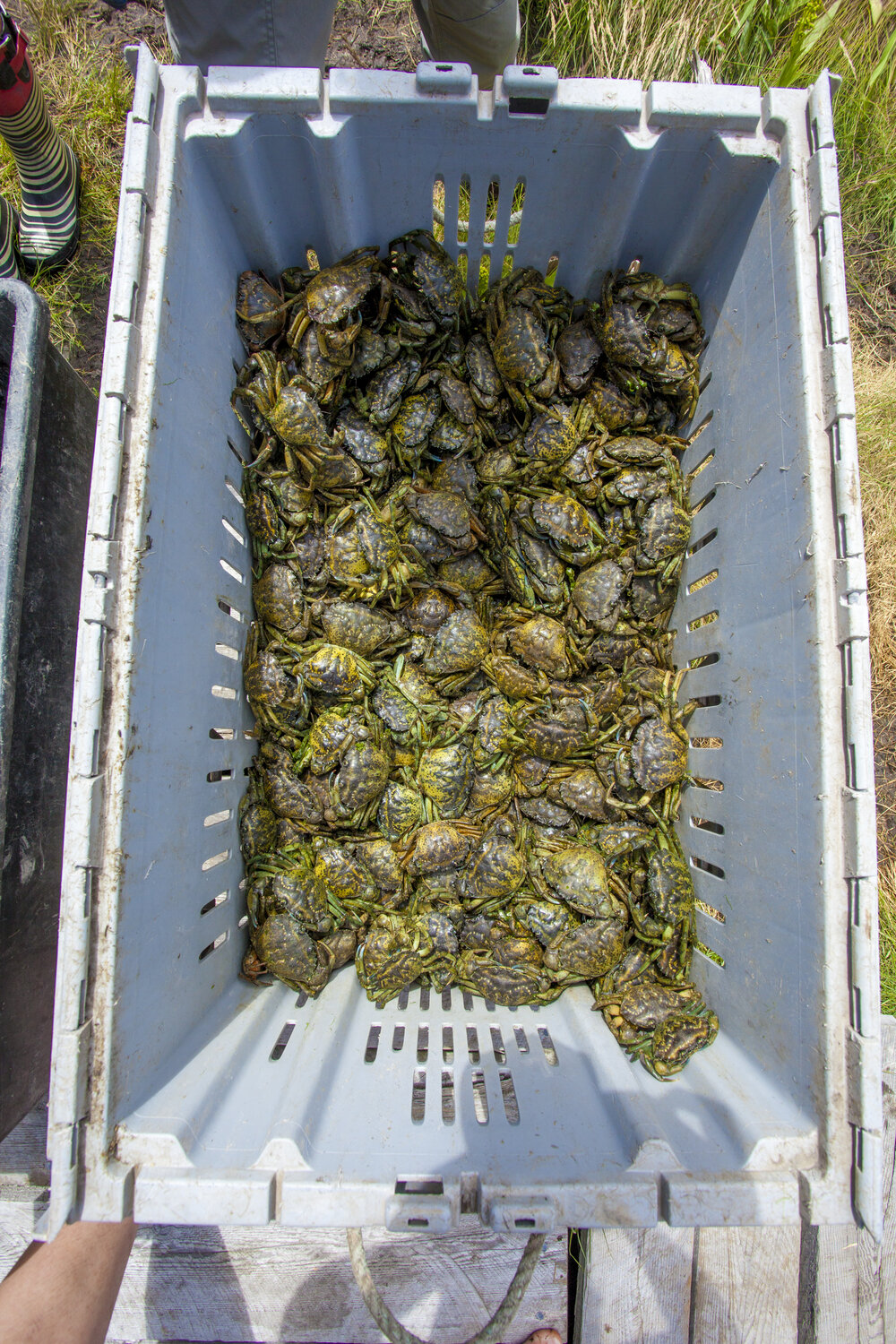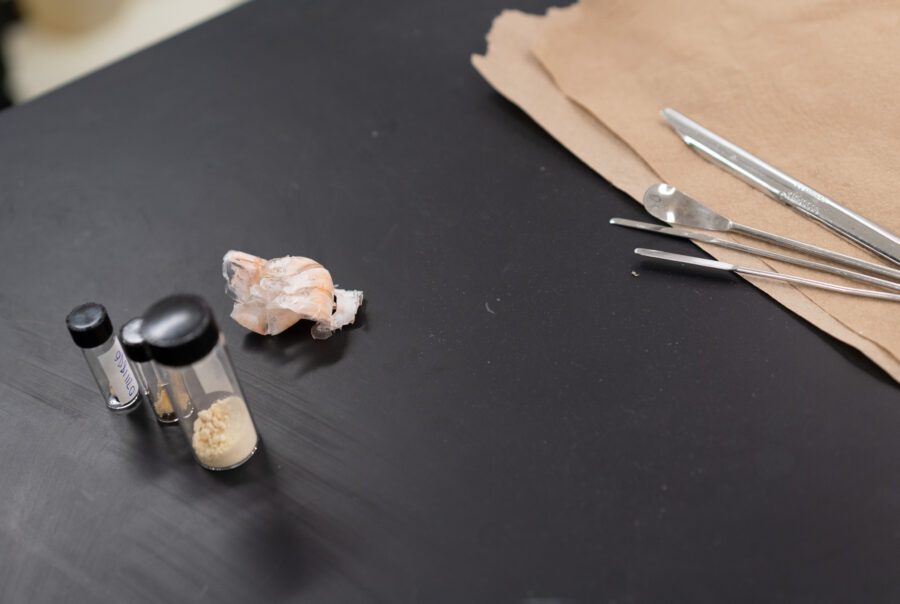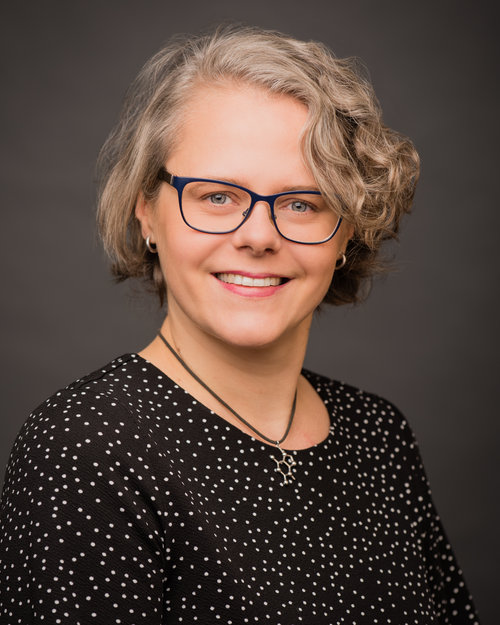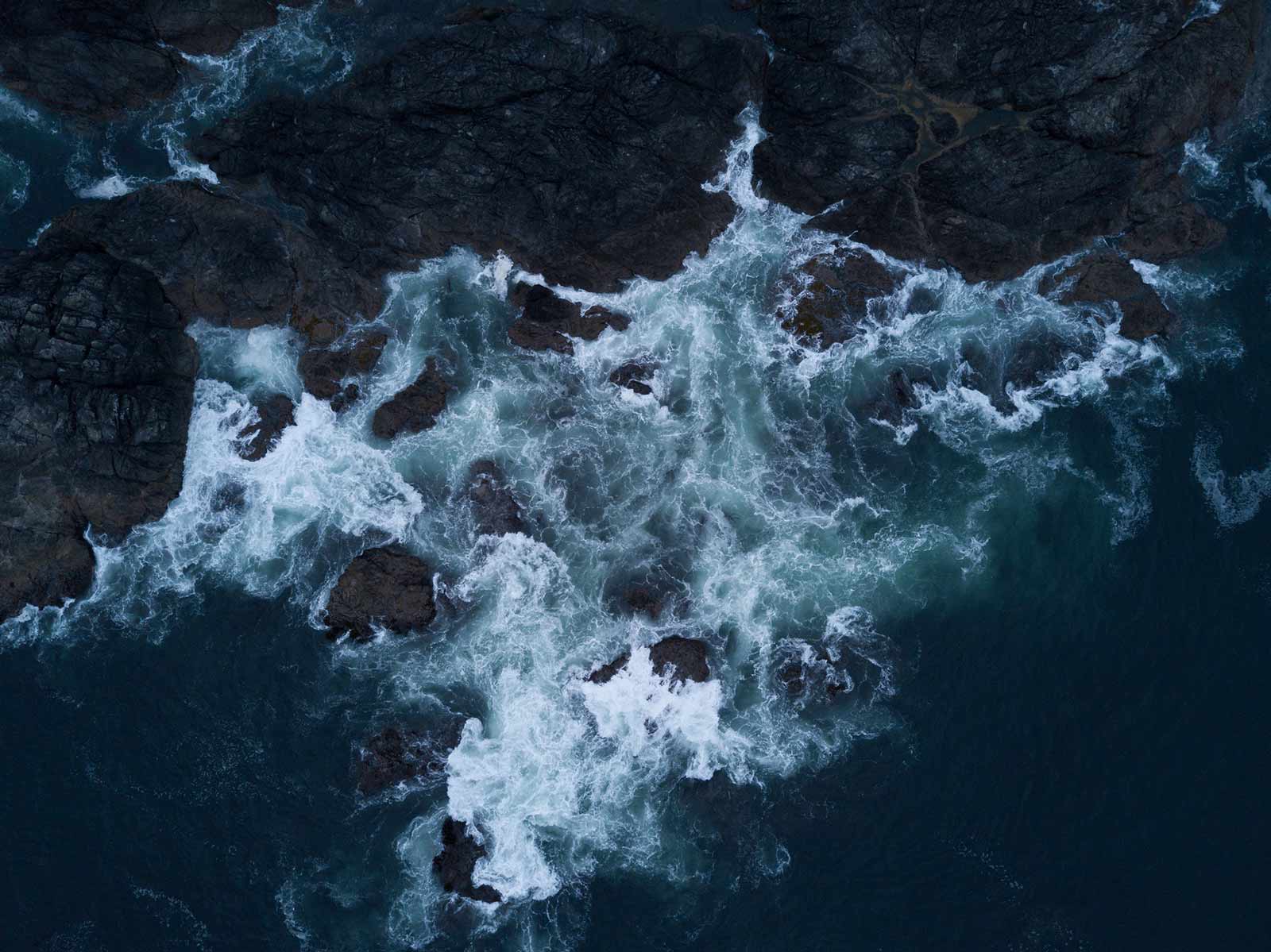Imagine a future where one of the most prolific and destructive marine invasive species is controlled, harvested, and processed into sustainable bioplastics.
One-third of the world’s plastics end up in the ocean where they biopersist, creating formidable challenges for wildlife and habitats. To address this crisis, Audrey Moores and her team at McGill University have discovered an innovative way to turn crustacean shell waste into biodegradable plastics, which could break down in the ocean.
The European green crab is an aggressive invasive species and causes ecosystem collapse via cascading effects around the world where it is not native. In eastern North America for example, it rips up vast quantities of eelgrass, which is nursery habitat for marine species, stabilizes marine sediments, and is a primary food for geese, turning lush underwater landscapes into muddy moonscapes. Each female green crab can produce in excess of 175,000 eggs, providing a seemingly endless supply. Chris McCarthy and Gabrielle Beaulieu from Parks Canada developed a surgically precise fishing methodology to extract green crabs from the ecosystem with minimal by-catch mortality.


Moores and her team have developed a process to turn this invasive species challenge into a global solution to the plastics dilemma. Using biochemical components of European green crab, they developed a marine biodegradable plastic which holds the promise of enhancing the recovery of deteriorated coastal ecosystems and provide a new industry to sustain coastal fishing communities.
McGill University and Parks Canada formed a partnership to develop this innovative, sustainable solution.
What did this project accomplish with the support of the Fathom Fund?
By supporting the development and scaling up of bio-plastic production from invasive European green crab shells, donors have directly contributed to preserving the health of the world’s oceans and the communities that rely on them.
The project team successfully validated the transformation of green crab to two plastic forms and have scaled up the process. They are preparing a paper on their work, and are now working closely with a company from Quebec to develop processes that can be adapted to snow crab, shrimp and lobster.
“It is incredibly empowering to have people be able to weigh in on research direction,” said Moores.
Parks Canada Partnership
Parks Canada led the engagement of stakeholders and communities by directly contributing raw material to this initiative through local community harvesting agreements and liaising with existing green crab license holders throughout southwest Nova Scotia.
Project Team
Dr. Audrey Moores is an associate professor at McGill University, Canada Research Chair in Green Chemistry (2007-2017), co-lead of the McGill Sustainability Systems Initiative – Material and co-founder and CEO of ChitoDry Inc. She is a leading expert in the field of catalysis using metal, metal oxide and biomass-based nanomaterials, with a special emphasis on sustainable processes and use of earth-abundant starting materials.
Chris McCarthy is the Resource Conservation Manager for the Mainland Nova Scotia Field Unit of Parks Canada. His team piloted the harvest of European green crabs in a controlled study to restore coastal ecosystems at Kejimkujik National Park Seaside. This project provided foundational information for the creation of a commercial green crab fishery in southwest Nova Scotia.
Gabrielle Beaulieu is the Coastal Restoration Project Manager at Kejimkujik Seaside. She manages restoration activities at the park and has created unique tourism opportunities including Gone Crabbin’ where visitors pay to help restore the coastal ecosystem by fishing crabs. She has also fostered partnerships to create high-end culinary products and experiences with green crab.




